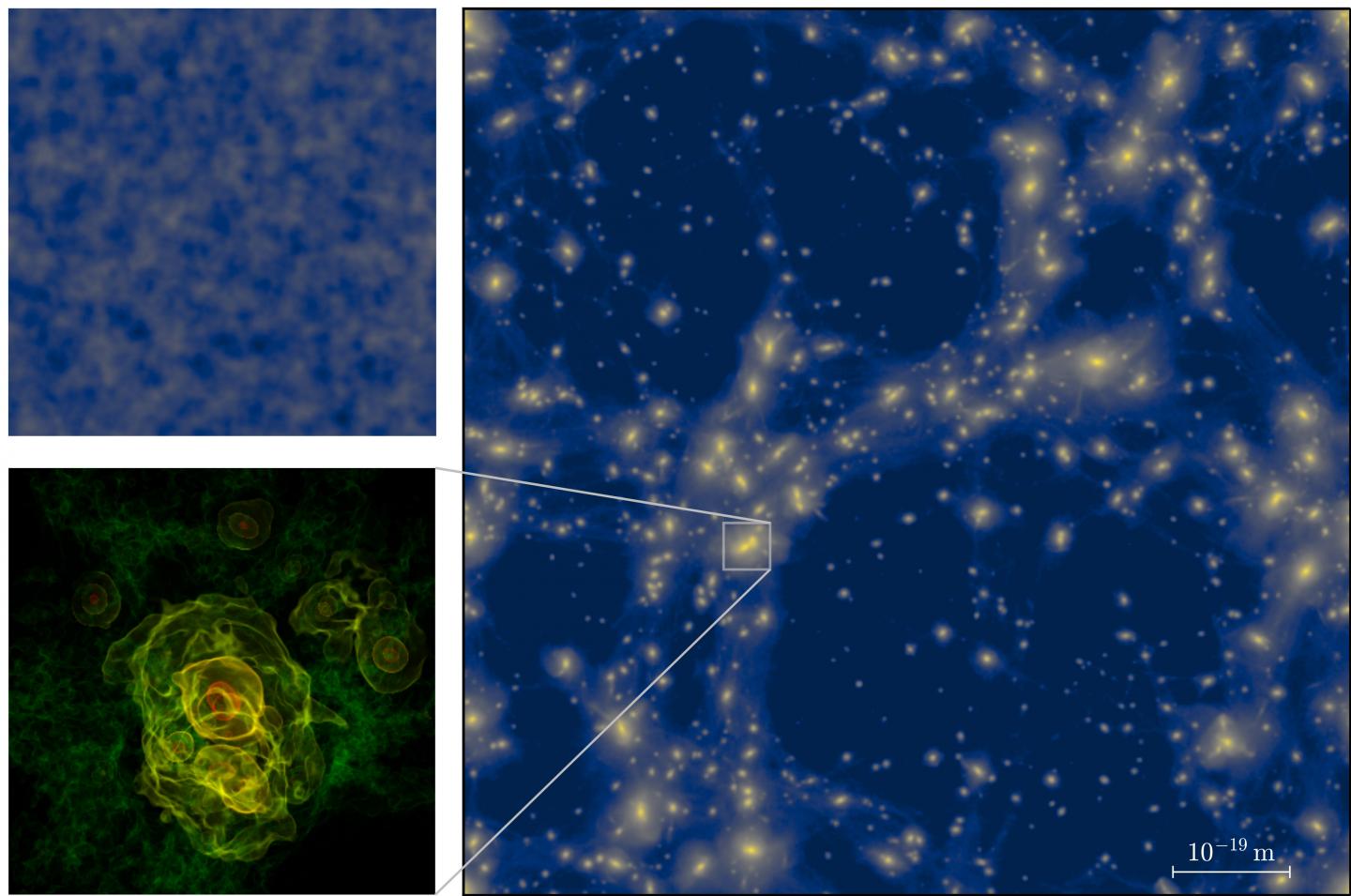The very first structures of the cosmos
In one of my newest books astronomers are trying to use a solar gravitational lens to look at the beginning of the universe. Whether they succeed, I will not reveal here. But physicists at the Universities of Göttingen and Auckland (New Zealand) have now determined what they would see with the help of greatly improved computer simulations. The scientists discovered that a complex network of structures can form in the first trillionth of a second after the Big Bang. But these are not just any random structures: the behavior of these objects already mimics the distribution of galaxies in today’s universe at this early time. Unlike today, however, these primordial structures are tiny. Typical clumps have masses of only a few grams and are much smaller than today’s elementary particles.
Similarly, in their simulations, the researchers were able to observe the formation of higher density regions held together by their own gravity. “The physical space represented by our simulation would fit a million times inside a single proton,” explains Professor Jens Niemeyer, head of the Astrophysical Cosmology Group at the University of Göttingen. “It is probably the largest simulation of the smallest region of the universe that has been done so far.” Their goal is to be able to calculate even more accurate predictions for the properties of these remnants from the beginnings of the universe.
Although the computer-simulated structures are very short-lived and eventually dissolve into the known elementary particles, traces of them may be detectable in future experiments. “The formation of such structures, as well as their motions and interactions, must have generated a background noise of gravitational waves,” says Benedikt Eggemeier, a doctoral student in Niemeyer’s group and first author of the study. “Using our simulations, we can calculate the strength of this gravitational wave signal, which could be measurable in the future.”
It’s also conceivable that tiny black holes could form as these structures undergo an unstoppable collapse. These primordial black holes could be part of the mysterious dark matter or could have grown in the interim. However, if the simulation predicts results that cannot be found in reality, it would be a way to test models of the young universe.
